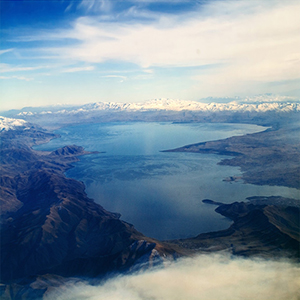Assessment of phosphorus behavior in sediments of Lake Sevan, Armenia

Submitted: 7 March 2023
Accepted: 21 September 2023
Published: 25 October 2023
Accepted: 21 September 2023
Abstract Views: 504
PDF: 161
HTML: 2
HTML: 2
Publisher's note
All claims expressed in this article are solely those of the authors and do not necessarily represent those of their affiliated organizations, or those of the publisher, the editors and the reviewers. Any product that may be evaluated in this article or claim that may be made by its manufacturer is not guaranteed or endorsed by the publisher.
All claims expressed in this article are solely those of the authors and do not necessarily represent those of their affiliated organizations, or those of the publisher, the editors and the reviewers. Any product that may be evaluated in this article or claim that may be made by its manufacturer is not guaranteed or endorsed by the publisher.
Similar Articles
- Catherine Pérez Vega, Franz Hölker, Karolina M. Zielinska-Dabkowska, Andreas Jechow, Polarised light pollution on river water surfaces caused by artificial light at night from illuminated bridges and surroundings , Journal of Limnology: Vol. 83 (2024)
- Sameer M. Padhye, Neelesh Dahanukar, Distribution and assemblages of large branchiopods (Crustacea: Branchiopoda) of northern Western Ghats, India , Journal of Limnology: Vol. 74 No. 2 (2015)
- Liseth PÉREZ, Julia LORENSCHAT, Rita BUGJA, Mark BRENNER, Burkhard SCHARF, Antje SCHWALB, Distribution, diversity and ecology of modern freshwater ostracodes (Crustacea), and hydrochemical characteristics of Lago Petén Itzá, Guatemala , Journal of Limnology: Vol. 69 No. 1 (2010)
- Maria Chiara FONTANELLA, Oscar RAVERA, Gian Maria BEONE, Nicoletta RICCARDI, Ilenia CATTANI, Mercury distribution in the main compartments of the eutrophic Lake Candia (Northern Italy) , Journal of Limnology: Vol. 68 No. 2 (2009)
- Johan C. Varekamp, Lake contamination models… , Journal of Limnology: Vol. 64 No. 2 (2005)
- Yosef Z. YACOBI, Ilia OSTROVSKY, Helen M. TALBOT, Occurrence of high concentrations of a unique degradation product of chlorophyll-a in particles residing below the thermocline throughout a period of oxygen depletion in Lake Kinneret , Journal of Limnology: Vol. 60 No. 2 (2001)
- Mauro TONOLLA, Sandro PEDUZZI, Antonella DEMARTA, Raffaele PEDUZZI, Dittmar HAHN, Phototropic sulfur and sulfate-reducing bacteria in the chemocline of meromictic Lake Cadagno, Switzerland , Journal of Limnology: Vol. 63 No. 2 (2004)
- Selene Babini, Luciana Cibils Martina, Elisa Luque, Noemi Gari, Nancy Salas, Adolfo L. Martino, Anuran larvae diet from agroecosystem’s ponds: environmental quality and implications for their populations , Journal of Limnology: Vol. 76 No. 1 (2017)
- André F. LOTTER, Wolfgang HOFMANN, Christian KAMENIK, Andrea LAMI, Christian OHLENDORF, Michael STURM, Willem O. VAN DER KNAAP, Jacqueline F.N. VAN LEEUWEN, Sedimentological and biostratigraphical analyses of short sediment cores from Hagelseewli (2339 m a.s.l.) in the Swiss Alps , Journal of Limnology: Vol. 59 No. s1 (2000): Climatic variability and ecosystem dynamics at remote mountain lakes
- Marina MANCA, Patrizia COMOLI, Studies on zooplankton of Lago Paione Superiore , Journal of Limnology: Vol. 58 No. 2 (1999)
<< < 57 58 59 60 61 62 63 64 65 66 > >>
You may also start an advanced similarity search for this article.

 https://doi.org/10.4081/jlimnol.2022.2132
https://doi.org/10.4081/jlimnol.2022.2132






